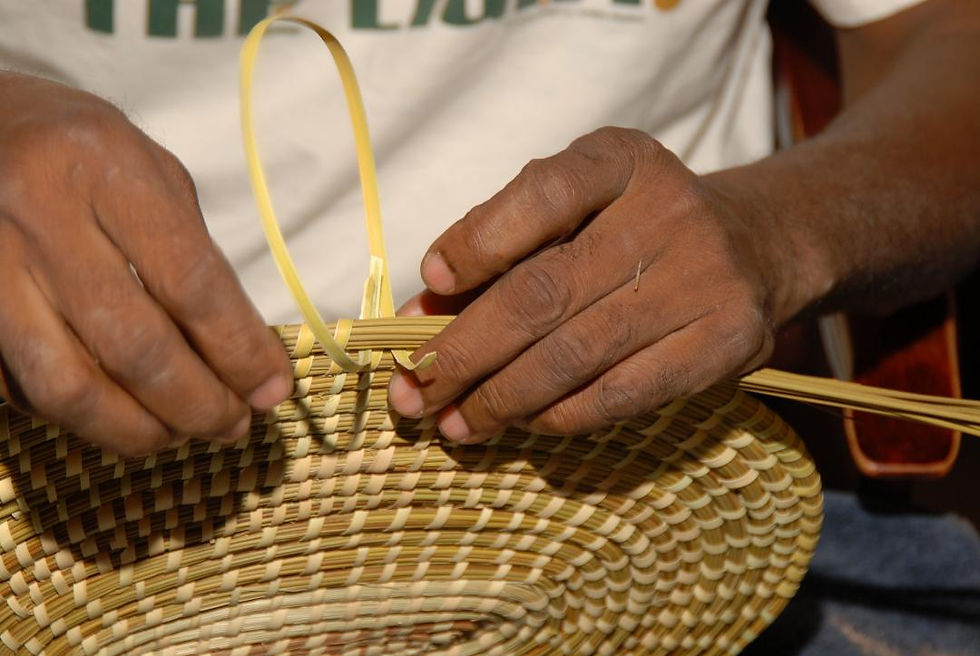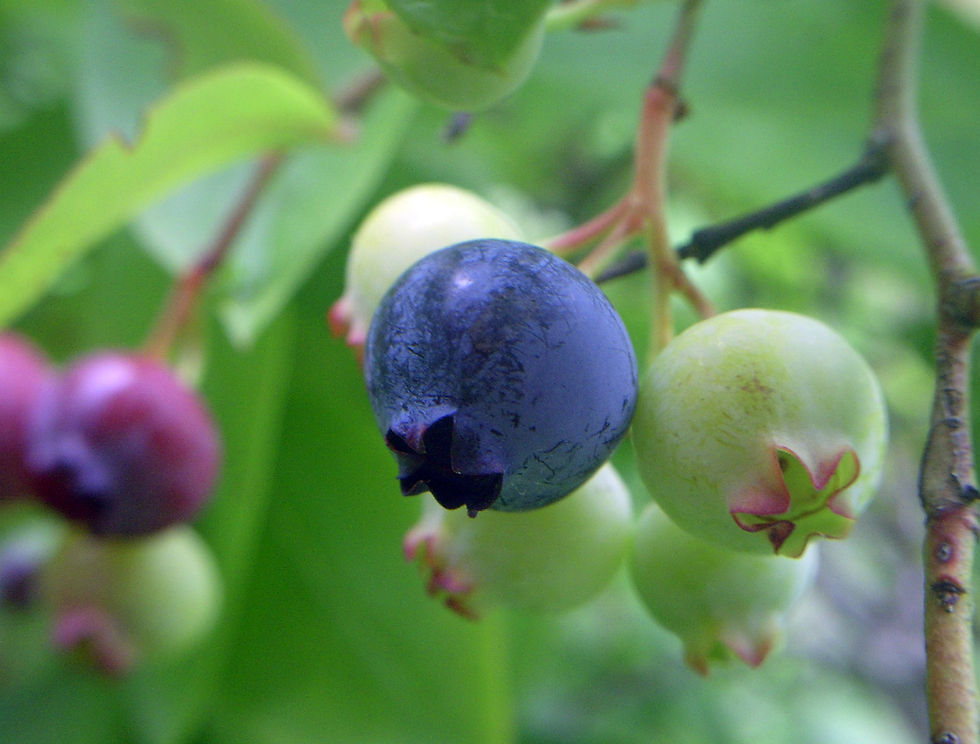Grasses for Gardens and Basket Weaving
- Jennifer Anderson

- Nov 25, 2023
- 3 min read

What a thrill to plant together perennials that take turns popping colors all season long. Even better: adding native grasses for beauty, depth and texture.
In this blog we’re looking at warm-season grasses, those that like full sun and bloom during the heat of the summer.
The star of today’s blog is a lesser-known grass, Pink Muhly, Muhlenbergia capillaris, also called Gulf Muhly, Mule Grass, Hairy-awn Muhly, and others.
Pink Muhly Grass not only sends up glorious, airy plumes of pink to purplish-red flowers in mid-fall, it also like many native plants has a cultural identity.

In South Carolina’s Low Country, descendants of West African slaves for hundreds of years have depended on what they call Sweet Grass for their livelihoods.

“Weaving was a means of support back in the day,” explains Kathy Burns, a retired behavioral specialist who uses Sweet Grass to weave not only baskets but also key chains, earrings and bracelets.
She describes the grass as similar to thread. “If you sew and use thread, it’s like a heavy thread.”
Burns and fellow weavers may be using a similar Muhlenbergia, known as sericea. However, there is enough doubt about the taxonomy of the grasses in the 1800s that I believe the sericea used in weaving actually is the same gloriously beautiful Pink Muhly increasingly turning up in our gardens.

Pink Muhly grows best in full sun and well-drained soils. It also works well as a meadow grass; it is highly deer resistant, and it grows 2 to 3 feet tall with an equal spread. After flowering, the stems and beige seed plumes persist for months into winter.
Pink Muhly attracts ladybugs and other beneficial insects, and it provides wildlife cover for native bees, and birds eat its seeds. It is native from Massachusetts south beyond Mexico and endangered in Connecticut and other states.
Here are additional warm-season garden grasses:

Little Bluestem, Schizachyrium scoparium, with its blue-green leaf stems and brilliant bronze-red seed heads. The Perennial Plant Association named Little Bluestem its Perennial Plant of the Year for 2022, describing “an ever-changing kaleidoscope of gray-green, blue, pink, purple, copper,

mahogany, red, and orange tones.” Little Bluestem is a larval host to various skippers including the
Common Wood Nymph (Cercyonis pegala) and Dakota Skipper (Hesperia dacotae).

Purple Lovegrass, Eragrostis spectabilis, with its airy pinkish-red inflorescences, is happiest with elbow room, and it tolerates heat, drought and Black Walnut. It thrives in dry, sandy soil. Purple Lovegrass is host to the Zebulon skipper and also can be used in a meadow, container or as a dried arrangement. This grass also is called Petticoat Climber because its seed heads detach and blow about like tumbleweed.

Prairie Dropseed, Sporobolus heterolepis, has beautiful, fine feathery seed heads and pink and orange hues in late summer. It is a thin, graceful grass with a lovely burnt or nutty, slightly citrusy fragrance. This grass also works well in rock gardens and around foundations. Prairie Dropseed stands up well to snow and heavy rains making it attractive even in winter.
These final two grasses may need extra room to roam:

Switchgrass, Panicum virgatum, makes a great vertical accent growing up to 6’ tall and blending beautifully with Sweet Joe Pye Weed, Eutrochium purpureum, and other tall perennials. Although Switchgrass is a clumping grass, it does spread slowly by underground rhizomes and will outcompete smaller


plants. Switchgrass is a larval host for the Delaware Skipper, and native bees nest in its stems. It looks lovely with asters and makes a great screen or addition to a meadow garden.
Indian grass, Sorghastrum nutans, is one of the tall prairie grasses along with Switchgrass, Little Bluestem and Big Bluestem, Andropogon gerardii. Indian Grass is more aggressive than the others and best reserved for mass plantings. It likes full sun and grows in sand, loam, clay or even gravel. Its feathery panicles persist well into winter.
A final note on baskets: Alston and Burns will happily mail baskets to anyone not able to make the trek to South Carolina. Alston can be reached at https://thegullahculture.com/, and Burns at bigkat2549@bellsouth.net.
Sources:
Alston, C. Interview, November 2023. Also, https://thegullahculture.com/.
Burns, K. Interview, November 2023.
Clausen, R.R. and Gregory D. Tepper. Deer-Resistant Native Plants for the Northeast. Timber Press, Portland, Ore. 2021. Pp: 146-147
Hill, S. Native Grasses, Sedges and Rushes for Gardens and Landscapes. Maryland Native Plant Society. Oct. 26, 2021.
Kirk, S. Shawn Belt and Norman A. Berg. Hairawn Muhly. USDA Natural Resources Conservation Service Plant Fact Sheet. November 2010.
Lee, J.G. Sweetgrass Baskets. Sweetgrass Cultural Arts Association. Mt. Pleasant, S.C.
McMillan, P. Plant Profile: Pink Muhly Grass: A Plant You Thought You Knew. September 26, 2022.
Smarr, T. Native Grasses for Your Garden, Jenkins Arboretum and Gardens. Sept. 15, 2022
The 2022 Perennial Plant of the Year, 2022 PPOY - Perennial Plant Association





Comments